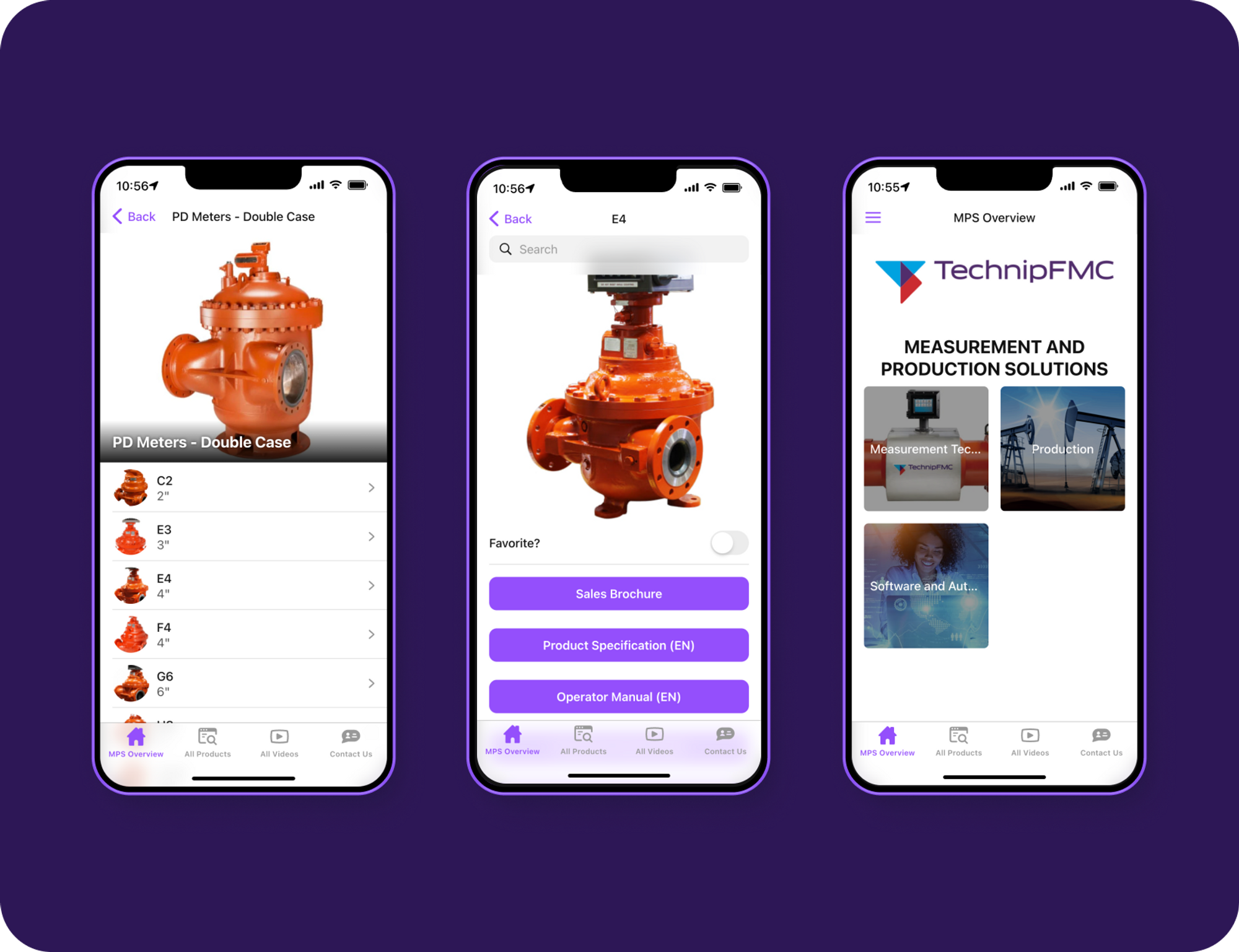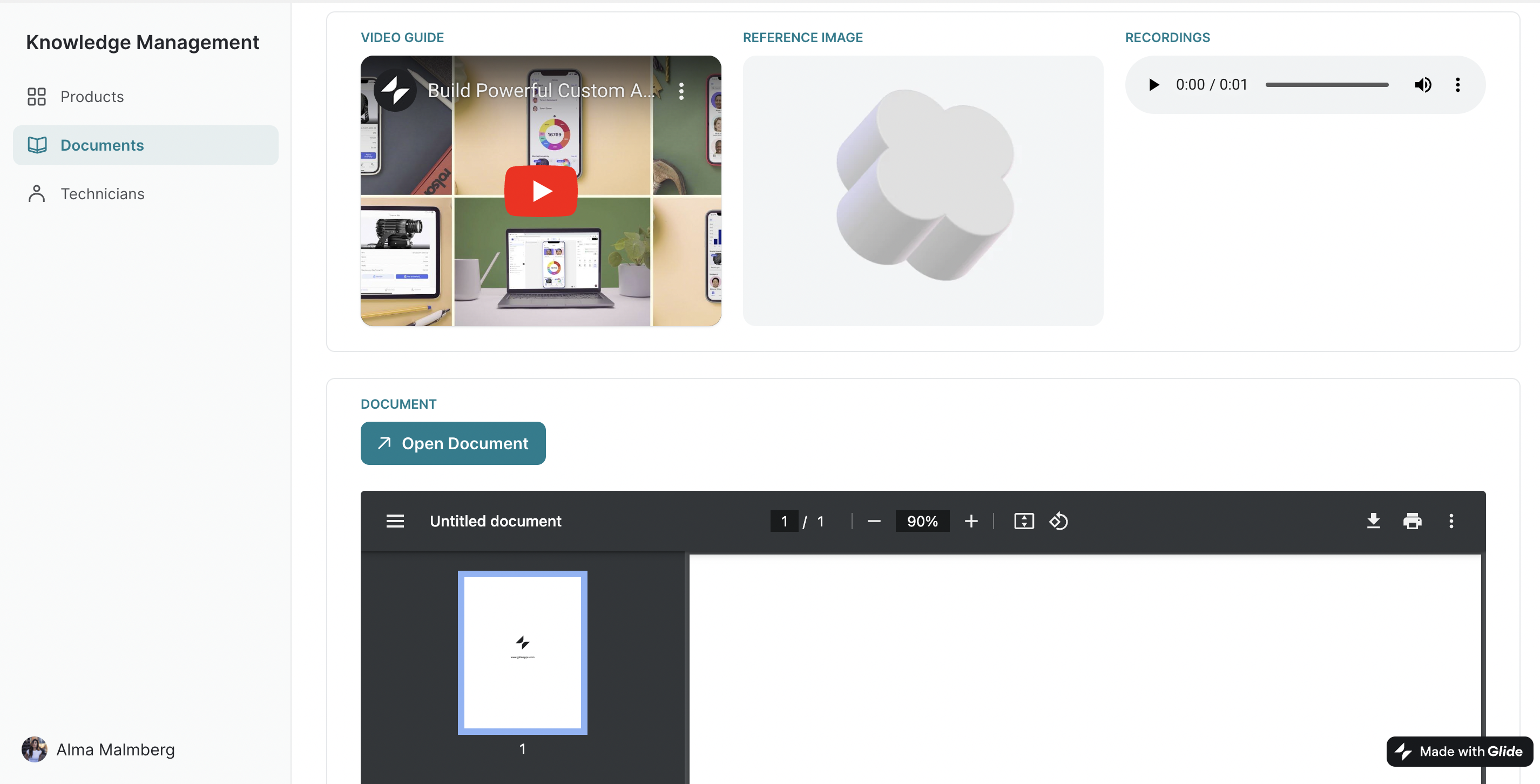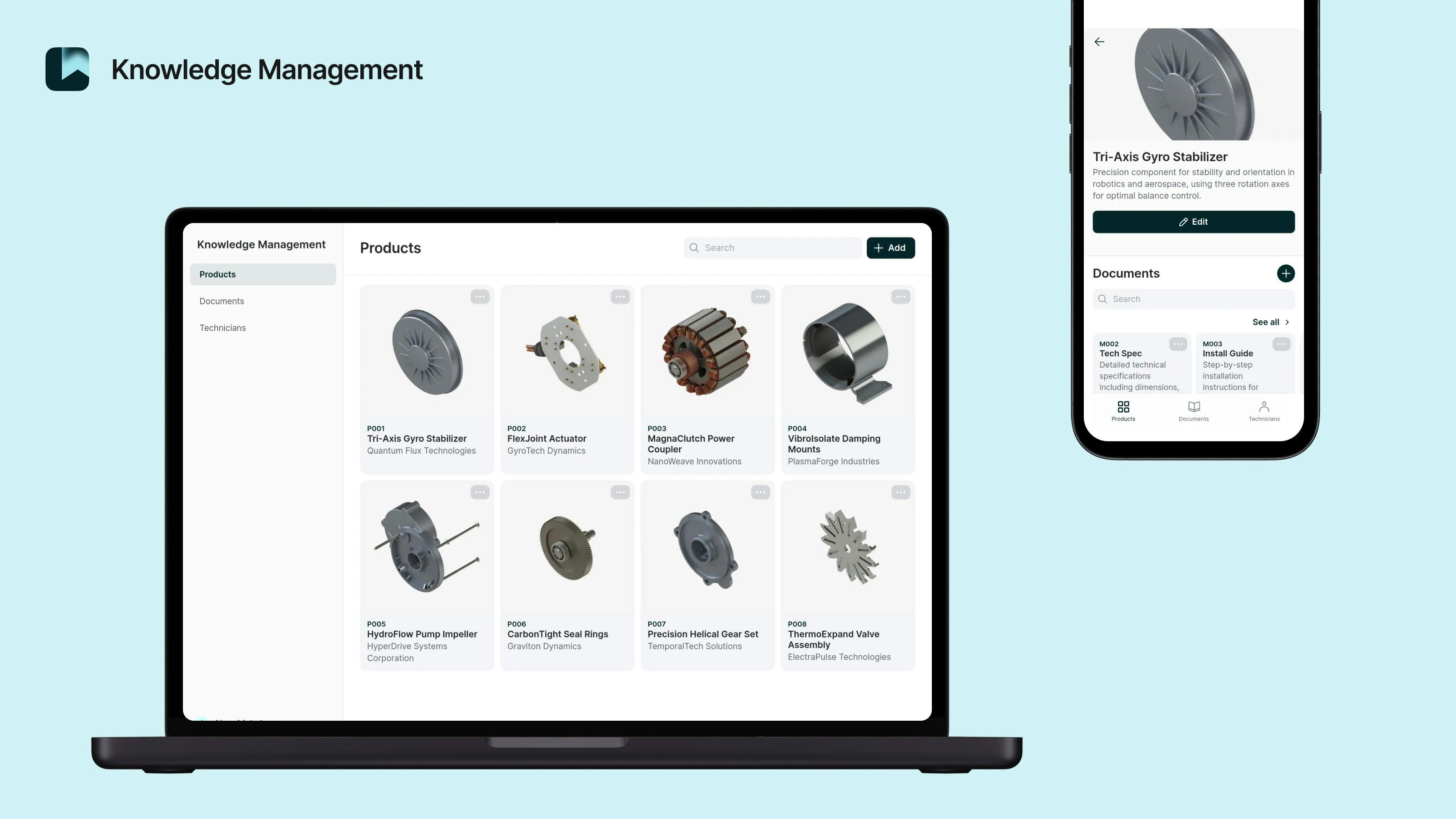Far too many companies organize their internal information the same way we organize the miscellaneous drawer in our kitchens — by throwing whatever we have in it and assuming we’ll remember it’s there when we need it. Unfortunately, both these systems end being a chaotic mess that makes it impossible to find anything.
An effective knowledge management system is important for companies of all sizes to have. It helps preserve and communicate institutional knowledge, gives workers access to important information, and ensures consistency across your organization.
To do that effectively, it has to be well organized, accessible anywhere work is being done, easy to search, secure, and capable of storing all sorts of diverse file types and formats. On top of all that, it still has to be simple enough not to overwhelm anyone looking for information.
It’s entirely possible to create a simple and effective knowledge management system for your business fairly easily - you just need some planning and the right tools. Building a custom solution can be the ideal approach for you and your team, and it’s easier than you might think.
The benefits of knowledge management
The purpose of a knowledge management system is simple — it gives people the information they need to complete tasks better. If you don’t have a system or have a system that’s so disorganized people don’t want to use it, your team won’t be as effective as they could be.
Having an effective knowledge-sharing system has the following benefits:
- Improved productivity - Since information is organized, teams can find needed information quickly and use it to help them with better decision-making and task execution.
- Better compliance - Employees have easy access to the right instructions. It’s easier for them to follow guidelines and stick to SOPs.
- Single source of truth - All employees are working with the same guidelines, creating consistency across your organization.
- Preservation of institutional knowledge - You have a system for recording and storing information so you are less likely to lose institutional knowledge when team members move on to new roles or companies.
- Reduced information silos - Information is shared company-wide instead of being siloed by team or role.

Technip FMC built a knowledge management app for storing sales brochures, manuals, and product information for their field sales teams that saved them $100,000 in printing costs and productivity hours in its first year.
Types of knowledge management software
“Knowledge management” is actually a bit of a catch-all term for any type of organization of information at a business. A knowledge management app can be internal-facing or customer-facing, as complex as a full guided learning management system (LMS), or as simple as a Google Drive full of product manuals.
Most companies have multiple different kinds of knowledge management systems for different teams, activities, and processes. Consider how you’re managing company knowledge in each of these areas and whether there might be an opportunity for you to create a better system moving forward.
Internal organizational knowledge uses could include:
- Employee onboarding - Put all your important onboarding info in one place so new employees can get up to speed quickly and management or HR don’t have to scramble to find the right documents for each new hire.
- Learning Management System (LMS) - Upskill your team in specific areas with structured courses through documentation or instructions for your unique processes.
- Brand guidelines - Organize brand assets, guidelines, and tone of voice instructions so you can easily keep any external communications aligned.
- Company SOPs - Collect standard operating procedures for common company processes so that anyone doing a task for the first time (or refreshing their memory) can still complete that task correctly.
- Product manuals - Store detailed information about each of your company’s products so that field techs can reference them when performing maintenance, sales and marketing can convey accurate information about products, or customer support can quickly reference details.
- Customer support documentation - Build a detailed repository of product information, FAQs, common challenges, and best practice solutions so your support agents can help customers quickly and provide a better customer experience.
External knowledge management use cases are typically self-serve resources customers can reference when making a purchasing decision, troubleshooting, or learning how to use one of your products or services. Organized and accessible resources like these can increase customer satisfaction and drive conversion. External knowledge management might take the form of:
- Product documentation - Detailed product information to help customers learn more about your products, make informed purchasing decisions, or troubleshoot their own problems.
- Learning Management System (LMS) - Learning programs that help your customers use your product or service more effectively. Especially important if your product has lots of technical features or a learning curve.
- FAQs - Collections of commonly asked questions and their corresponding answers in an easy-to-search database.
- Chatbot database - Your knowledge database can power a chatbot that customers can use to get answers immediately in real-time instead of waiting for an agent to come online.
What you need from your knowledge management tool
When choosing a knowledge management solution, it helps to know how you need it to support your team. Features like mobile accessibility, easy edit access, and organization help your team reference important information more quickly and easily.
- Privacy & security - A lot of company knowledge is proprietary or sensitive. Your knowledge management solution should give you the tools to keep that data secure and set roles and permissions to control who gets access to it.
- Taxonomy and searchability - You need to be able to organize your information and documents in a logical way and give users the ability to search your database so they can quickly find the information they need.
- Quick and easy editing - Information changes all the time, and you need to keep your knowledge current. Editing your knowledge management content should be self-service, not gated or difficult to access, so team members can quickly jump in and update easily as needed.
- Simplicity - The simpler your knowledge management system is, the easier it will be for users to find the information they need. Avoid choosing a platform with excessive features or trying to stuff too many different kinds of information into one system.
- Flexible file storage - Many knowledge management solutions are really document management systems at their heart. Since documentation comes in so many different forms, you need to be able to store PDFs, word docs, videos, images, audio files, and more in a single place.
- Collaboration - Many different people on your team have useful knowledge that should be shared and preserved. By creating a wiki-type knowledge management process and encouraging team members to collaborate on it, you can benefit from the information held by subject matter experts across your organization.
- Mobile accessibility - Information is most useful when you can access it where and when you need it. Team members should be able to use your knowledge management software from a tablet or smartphone so they can reference information from a shop floor, warehouse, or in the field.

“When our technicians are out in the field, they have their tool belt on. They might be on a ladder or at a hospital. Before, they would have to log into multiple manufacturers and our internal customer connection portal to get a cut sheet or download an installation guide or other needed information. So we decided to put that in their hands in a mobile app, where they can get directly to the data they need right there on the spot in two clicks.” - Brian Banks, Tech Integrations Specialist at Lone Star Communications.
Choosing the right knowledge management software
There are a lot of different types of software you can use to support your knowledge management strategy and organize your knowledge base.
Cloud-based file storage or spreadsheets
A lot of businesses simply store information in online folders or spreadsheets. This can work for a little while but gets disorganized quickly as your business grows and your knowledge base scales with it. It takes a lot of work to keep folders organized, it can be hard for new employees to find what they’re looking for, and you’ll often end up with missing files, outdated documents, or replicated and contradictory information.
Buy off-the-shelf software
There are many software solutions like Atlassian, Notion, and Clickup that either have features to help organize company knowledge or are specifically designed for that purpose. These tools can be easy to set up and have a lot of useful workflows built in. However, they do come with downsides.
They tend to have complex interfaces with lots of unnecessary features since they’re designed to fit many potential uses. This means you’re paying for bloatware that you don’t need. Their increased complexity can also make them more confusing for employees to use. You also have less control over your workflows and what kinds of file types you can store in them.
Custom-code an app
It’s possible to get a more tailor-fit solution by employing developers to custom-code knowledge management software for your company. A custom app will suit your needs perfectly without having a bunch of unnecessary features.
The downside is that custom coding is a slow process, and engineering time is expensive. It can be hard to justify the budget for certain use cases, especially internal tools. With a custom-coded app, you’ll also have to code mobile and desktop versions separately, requiring additional time. As your needs change, any updates or changes you need made over time will also need to be run through another round of engineering, slowing your team down.
Build your own with no code
No code platforms like Glide let you create your own customized apps without having to know to program or hire outside help. You can quickly and easily assemble pre-built components and connect your data to create an app that suits your exact needs. Glide apps are mobile adaptive by default, so your app can be accessed by mobile devices in the field, on sales floors, and in warehouses.
How to build custom knowledge management software with no code

Glide makes it easy to build a custom knowledge management system for your company without having to code any of it. To save some time, you can start with a generic template like this knowledge management app template. This gives you the essential features you need, which you can then customize to suit your specific needs.
First, sign up for a Glide account and make a copy of the template. You’ll be able to preview it from your browser or on your mobile device by scanning the QR code in the bottom right corner of the image above. This template has three screens to start with - products, documents, and users.
Connect your data & upload documents
Click over to View Data to see the information currently powering the template. You can easily replace that data with your own in the built-in Glide Tables or connect your new app to your existing company data source. You can upload an Excel sheet, connect to a cloud spreadsheet like Google Sheets, or connect to a range of SQL databases.

Customize your app’s structure and taxonomies
Add pages or categories to your app to suit your specific needs. An LMS or onboarding app might have a linear structure, ensuring that the person using it receives all the information important to their role. Something like a field repair app, which is the format this template takes, is centered on the product being repaired so the specific information the user needs can be found quickly when on-site.
If you’re creating knowledge base software for a retail team to use on the floor, you might want to categorize your products so the employee can pull up your range of shampoos, for example, and help a customer compare their options. Choose a structure that fits your user’s workflow best.
Add components for notes or voice memos
Letting users add their own notes and context to your knowledge management system helps your company record things like tacit knowledge or implicit knowledge that is usually siloed off by role or team. Giving multiple ways someone can record new knowledge or relevant information — like both a written note form and a voice memo recorder — helps encourage this as well.
In this template, clicking on a product shows you a description, links to all related documentation for that product, and provides an FAQ where you can answer questions that are related to that product. Users can upload additional documents from this screen as well.
The documents screen shows you a list of all the documents stored in the app’s content management system. You can see there is a section where you can see any previous user’s notes, and one where you can add your own. There is also space for users to attach video walkthroughs, voice memos, or PDFs.

Incorporate AI to power your information
Artificial intelligence is extremely effective at parsing large amounts of information and distilling it for use. That makes it a powerful addition to your knowledge management process. You can add AI-powered features and functionality to your app to help improve your team’s productivity.
Voice-to-text can convert voice memos into written records. This can be especially useful for teams in the field where teams are in a hurry or conditions are harsh, like CarboNet’s field app. AI can also be used to more effectively search your database and return summaries of disparate information or specific documents so users spend less time searching for the information they need.
Set users & permissions
Your Glide app is private by default so you can control access to your app and keep your company information secure. Within the app, you can also set users and permissions, showing different data to different users to help make your app less confusing. You could, for example, specify a user’s team when they sign in and only deliver them data related to their specialty or role.
Share your app
When you’re done, share your app easily by sending an email or a Slack message with a link, publishing a QR code, or linking to your app on your internal website. Add your knowledge management app to your IT system and onboarding flow so your team is aware of the tools they have available to them.
Give your team the knowledge they need to succeed
A good knowledge management system puts the right information into the right hands at the right time. You don’t want your team wasting time searching through Notion pages in the middle of a project or completing tasks without referencing documentation because they don’t want to search ClickUp attachments fruitlessly.
Give them the tools they need to complete tasks effectively by accessing detailed documentation for any project. Give them the ability to access any information they need quickly because they can pull it up on their phone in real time in any environment. Give them the power of your collective knowledge by including thorough context and the ability to share knowledge by adding their own notes.
Build an app that is tailored to your team and your work, and get the full benefit of your business’s knowledge.






